
eBook - ePub
The Vietnam War: History in an Hour
Neil Smith
This is a test
Share book
- English
- ePUB (mobile friendly)
- Available on iOS & Android
eBook - ePub
The Vietnam War: History in an Hour
Neil Smith
Book details
Book preview
Table of contents
Citations
About This Book
Love history? Know your stuff with History in an Hour.
Frequently asked questions
How do I cancel my subscription?
Can/how do I download books?
At the moment all of our mobile-responsive ePub books are available to download via the app. Most of our PDFs are also available to download and we're working on making the final remaining ones downloadable now. Learn more here.
What is the difference between the pricing plans?
Both plans give you full access to the library and all of Perlego’s features. The only differences are the price and subscription period: With the annual plan you’ll save around 30% compared to 12 months on the monthly plan.
What is Perlego?
We are an online textbook subscription service, where you can get access to an entire online library for less than the price of a single book per month. With over 1 million books across 1000+ topics, we’ve got you covered! Learn more here.
Do you support text-to-speech?
Look out for the read-aloud symbol on your next book to see if you can listen to it. The read-aloud tool reads text aloud for you, highlighting the text as it is being read. You can pause it, speed it up and slow it down. Learn more here.
Is The Vietnam War: History in an Hour an online PDF/ePUB?
Yes, you can access The Vietnam War: History in an Hour by Neil Smith in PDF and/or ePUB format, as well as other popular books in History & Vietnam War. We have over one million books available in our catalogue for you to explore.
Information
Appendix 1: Key Players
Ho Chi Minh (19 May 1890–2 September 1969)
The single most influential figure in the Vietnamese nationalist movement, Ho was one of those rare figures in history who appear to transcend the movement which spawned them, and who come to personify a set of ideas and goals. The youngest of three children, Ho was born Nguyen Sinh Cung in 1890 in a village in central Vietnam. Ho spent his formative political years in exile. Between 1911–41, he travelled through Europe, USA, China and the Soviet Union. Even though he was criticized by communists for being a nationalist, he helped found the French Communist Party, and spent time studying in Moscow. He returned to Vietnam in 1941, and helped establish the Viet Minh, and worked with the Office of Strategic Services (OSS) to resist the Japanese occupation of the country.

At the end of the war, he declared Vietnamese Independence, but failed to sustain this ideal in the face of French, British, and US opposition. While he had emphasized the nationalist nature of his movement throughout much of the 1940s, his need for external support and recognition led him to play up his communist credentials to a much greater extent towards the end of the decade. While Soviet recognition proved useful, it was the practical military assistance of the new People’s Republic of China which proved critical in sustaining the war effort against the French.
Thwarted in his attempt to create a united Vietnam at Geneva in 1954 and two years later by the failure of Diem to hold unification elections, Ho was forced to consolidate his grip on power in the North while waiting for Diem to be overthrown. The gradual escalation of US involvement threatened to place an insurmountable obstacle in his path, but he correctly predicted that the lack of political will in US for a long, bloody war would ultimately leave the way open for the conquest of the South.
Feted as the father of the DRV, Ho also played a key role in maintaining morale in the North during US bombing campaigns and the costly Tet Offensive. His death from heart failure in 1969 led to the creation of a posthumous cult of personality, with his body embalmed in a mausoleum and Saigon renamed Ho Chi Minh City after its capture in 1975.
General Vo Nguyen Giap (25 August 1911–)
With an academic background, and little formal military training, Vo Nguyen Giap rose to become not only North Vietnam’s pre-eminent strategist and military leader, but arguably one of the twentieth century’s best known commanders.
Before the outbreak of the First Indochina War, Giap was educated at the University of Hanoi, before becoming a history teacher. After joining the Indochina Communist Party in 1937, he was responsible for founding the Viet Minh with Ho in 1941. He subsequently led the resistance campaign against the Japanese in the north of Vietnam, with the assistance of US OSS agents. After the war, he was appointed both Minister of the Interior and Commander-in-Chief in the Democratic Republic of Vietnam, and proclaimed the outbreak of war against the French on 19 December 1946. Regarded as the architect of the three-stage Dau Tranh strategy, Giap deployed a joint political-military approach which was designed to win over the population, gradually undermine the enemy’s will to fight, before progressing to conventional big unit battles. His greatest success against the French was undoubtedly the Battle of Dien bien phu in the spring of 1954. Surprising the French with his ability to move both a large army and heavy artillery into positions surrounding the French base, Giap inflicted such a defeat on France that they were forced to leave South East Asia forever.
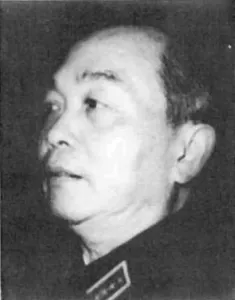
Source: US Air Force Center of Military History
Giap turned his three-stage strategy on the new South Vietnamese Republic and US forces after 1954, successfully undermining the credibility of the ARVN, and managing to control most of the country’s Strategic Hamlets during the programme’s short-lived existence. Perhaps his biggest mistake was in believing that the time was right for a general offensive during Tet in January 1968. The failure of the offensive not only had a significant impact in terms of casualties, it virtually wiped out the Viet Cong in the countryside and prevented a further major campaign until Easter 1972.
After the US withdrawal, he was appointed Minister of Defence; a position he held until 1980.
Ngo Dinh Diem (3 January 1901–2 November 1963)
The architect of the South Vietnamese State, and the US’s principal ally in South East Asia, Diem’s political career came to an ignominious end when he was arrested, and shot dead in the back of an army van (with Ngo Dinh Nhu) after being deposed by his own forces in November 1963.
Diem grew up in a rich, aristocratic Vietnamese family, and spent time working under Emperor Bao Dai. He went on to become a hardline regional governor, gaining a reputation for taking a tough anti-communist line, and for demonstrating an independent position between French colonialism and the Viet Minh nationalists. During the First Indochina War he was captured and almost killed by the Viet Minh. After escaping, he visited the United States, where he met politicians such as the (Roman Catholic) senator John F. Kennedy. After the French defeat, he returned to Vietnam and was put forward, in the face of French opposition, by the US delegation as a possible ruler of South Vietnam.
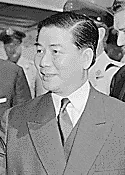
NARA
The defining moment in his rise to the top of South Vietnamese politics was the 1955 referendum over who should rule the country: Bao Dai or himself. Relying heavily on CIA subversion, vote-rigging, and physical intimidation of potential Bao Dai voters, he achieved an overwhelming victory; claiming to have won 98.2 per cent of the vote. Once in power, he proved himself to be as intolerant of political opposition as he was enthusiastic to develop a system of nepotism and patronage. Although Roman Catholics made up approximately 10 per cent of the population, all positions of political and military power and land ownership were in the hands of Catholics. He arrested tens of thousands of political opponents, targeting suspected communists for the most part, but also including trade unionists and Buddhists in his trawl of prisoners.
As opposition to his rule grew, and US tolerance of his methods was undermined by his failure to stabilize South Vietnam, his grip on power gradually weakened. In February 1962 two disaffected South Vietnamese air force pilots bombed the presidential palace. Diem survived unharmed, but authorized his brother to increase repression on political dissidents. By October 1963, the CIA and the US Ambassador to South Vietnam, were aware that senior Vietnamese officers were developing a plan to overthrow Diem. On 1 November, with US permission, the plan was implemented resulting in his death in the van.
Madame Nhu (Tran Le Xuan) (15 April 1924–24 April 2011)
Mme Nhu was arguably the most controversial figure of South Vietnam’s brief history. An advocate of women’s rights, but an opponent of abortion and contraception, hailed as the saviour of South East Asia in the 1950s by the US media, then lambasted for her callous insensitivity towards the regime’s opponents, she was a deeply complicated character who appeared to intoxicate as much as revile even her political enemies.
Born Tran Le Xuan into a wealthy (Buddhist) Vietnamese family, she married Ngo Dinh Nhu at the age of eighteen, and quickly abandoned Buddhism for her husband’s Roman Catholic faith. An early victim of the First Indochina War, she was taken prisoner by the Viet Minh for four months along with her daughter and mother-in-law. After her brother-in-law assumed control of South Vietnam in 1955, she became the most powerful female in South East Asia as a member of the South Vietnamese National Assembly. Her husband’s control of the secret police, and her unofficial role as the hermit-like Diem’s ‘first lady’ guaranteed her both headlines and influence.
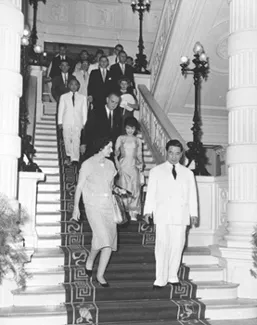
LBJ library
As US patience with Diem waned, Mme Nhu resorted to high profile campaigns to defend her brother-in-law’s regime. In 1963, she dismissed the self-immolation of Buddhist monks as a ‘barbeque’ and condemned their lack of patriotism for using imported petrol. She followed this up with a controversial lecture tour of US campuses where she was both ignominiously ignored by her own father, ambassador to to the US, and pelted with eggs by US students.
It was during this tour that she was informed of her husband and Diem’s death at the hands of the army. Her children were given free passage from South Vietnam and she settled with them in Paris, then Rome. Even in her later years, she wasn’t far from controversy: in 1986 her brother, Tran Van Khiem, was charged with smothering their parents to death. She refused to condemn him, instead claiming he was the victim of a US conspiracy.
Nguyen Van Thieu (5 April 1923–29 September 2001)
Nguyen Van Thieu presided over two critical periods in the decline of South Vietnam. He served as President while the US withdrew from the country in 1973, and remained in power until shortly before the final collapse of the country in April 1975. His first major involvement in the country’s political fortunes came as a supporter of Ho Chi Minh’s nationalist movement, rising to the position of District commander. However, this dalliance with the Viet Minh lasted barely a year, once he realized that the nationalist movement was a front for communist insurgents.
After studying at various military academies, he fought with the French against the Viet Minh until the end of the war in 1954. He was promoted to the rank of corps commander in the South Vietnamese Army, and spent time training in the USA. He was amongst the group of army officers who carried out the coup against Diem in 1963, and then maintained his position within the army leadership during a succession of coups 1964–65.
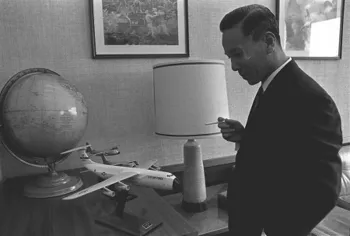
LBJ library
In 1965, he was appointed Head of State; a notional figurehead with power residing with the Prime Minister, Nguyen Cao Ky. By 1967, Thieu was strong enough to run for President with Ky as his subordinate running mate in the country’s first presidential elections. The rigged election, gave Thieu the power to rule as a virtual dictator, presiding over a corrupt political system which relied entirely on the military and US aid for survival. He strongly resisted US attempts to broker a deal with North Vietnam, and felt betrayed by the their later withdrawal and failure to carry out its promise not to leave the South on its own in the event of a resumption of hostilities.
However, he had not been forgotten, the CIA flew him and two suitcases full of gold to Taiwan, from where he moved to south London. He remained in England until the later stages of his life, when he relocated to Massachusetts.
Robert McNamara (9 June 1916–6 July 2009)
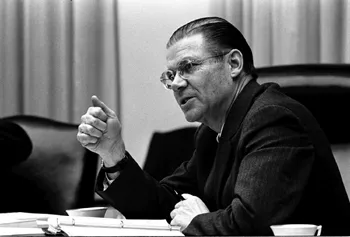
LBJ library
Rob...